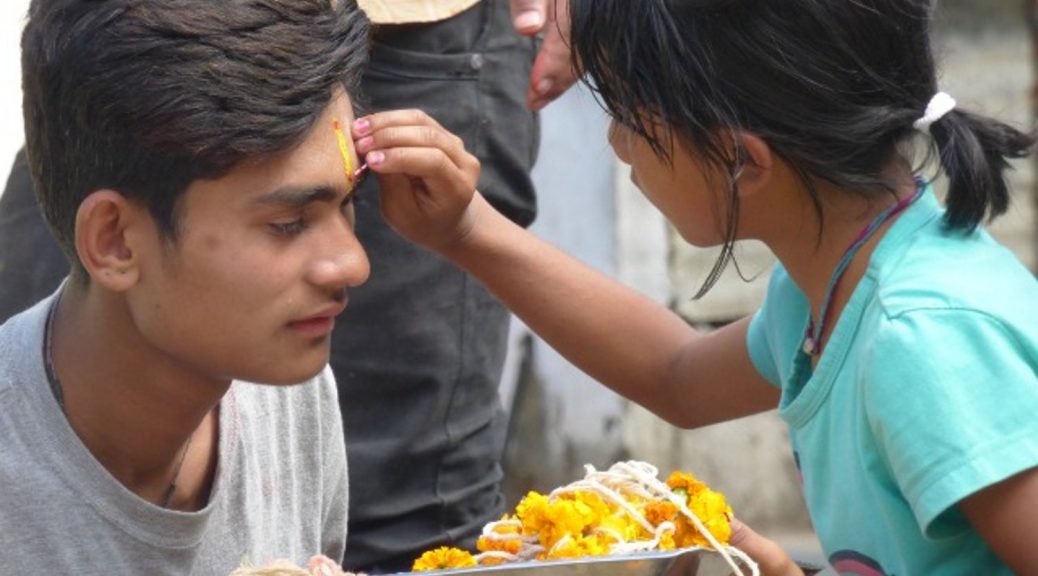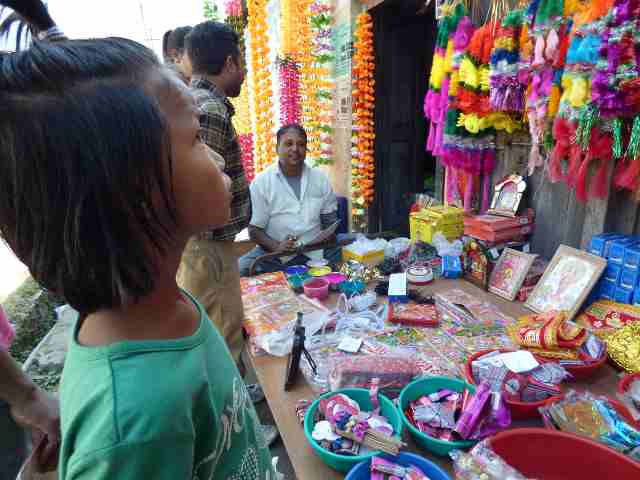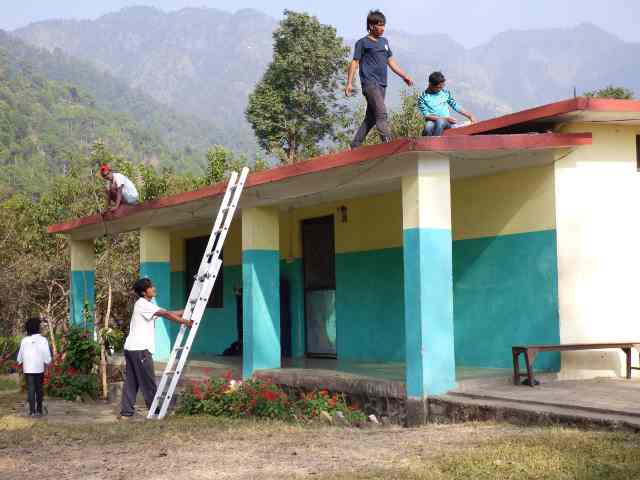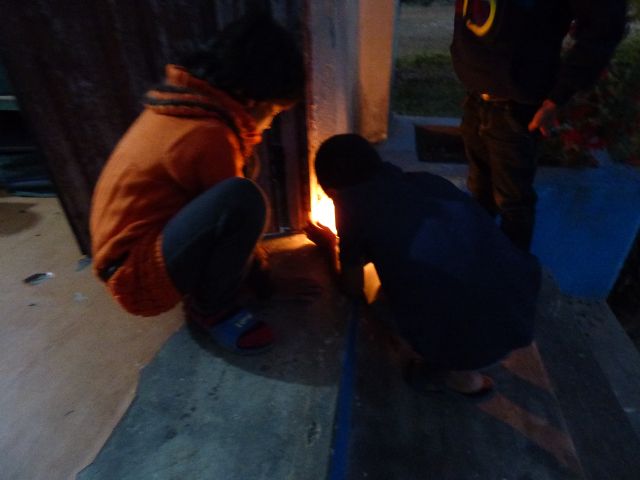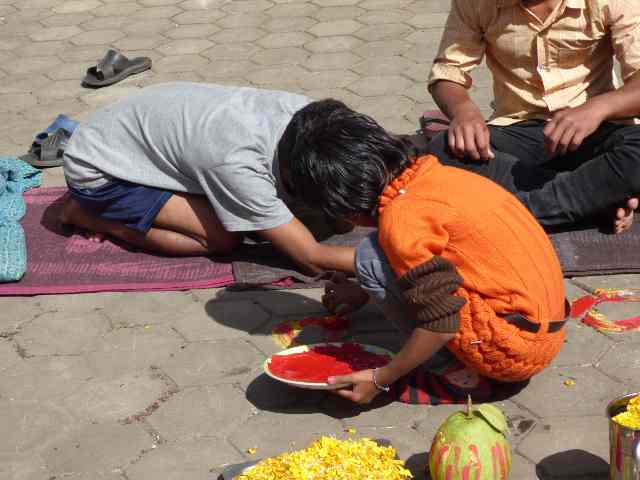Writen by Marina Viñas, volunteer of Children’s Home
This last month we go from celebration to celebration. Once finished Dashain, it is the turn of Tihar, also known as Depawali and Yamapanchak. Five-day-long Hindu festival of lights, music and dance that begins with the Kaag Tihar and ends with the Bhai Tika.
Walking by Bhimphedi we see that the shops are filled with garlands, flowers, pigments of colors and lights that will be used to decorate all the houses. In the street, in front of each house, we see patterns on the floor (such as mandalas) made of colored rice, dry flour, colored pigments and flower petals. It is the so-called Rangoli, which is meant to be the sacred welcoming for the Gods and Goddesses of Hinduism. We also note that it is time to paint the facades and put lighting – like Christmas at home -. And garlands of flowers in the doors and windows. Balmandir could not be less. In the first place, rooms must be thoroughly cleaned and Krishna commissioned to children to paint “the circus”. The Didis, with the help of the smaller ones, made the flower garlands that were placed on the doors and windows. We also put lights on each one of the modules of Balmandir. How nice, at night, when Balmandir is lit red, blue and green! And in addition with candles in front of each door.


Tihar is the second biggest Nepalese festival after Dashain and shows reverence to humans, Gods and animals – as crows, cows and dogs-. Each of the five days of Tihar feast has a specific symbolism. The first day is called Kaag Tihar. The cawing of crows and ravens symbolizes sadness and grief in Hinduism, so devotees offer crows and ravens sweets and foods placed on the roofs of houses to avert grief and death in their homes. The second day is called Kukur Tihar. People offer garlands, tika and delicious foods to dogs – the animal that occupy a special place in Hindu mythology – and acknowledge the cherished relationship between humans and dogs.
The third day – Gai Tihar and Laxmi Puja- people shows their gratefulness to the cow by garlanding and feeding them with the best grass; and Laxmi – the goodess of wealth – is thanked for all the benefits that were bestowed on the families by lighting oil lamps or candles on doorways and windows. That day, Deusi and Bhailo is celebrated with lights and fireworks. Deusi is balladic and tells the story of the festival, with one person narrating and the rest as the chorus. In returns, owners give money, fruit and sel-roti (a Nepali roundel made of rice flour and sugar). On the fourth day of Tihar, there are three different known pujas, depending on the people’s cultural background: Goru Tihar or Goru Puja – worship of the oxen -, Govardhan Puja – which is worship towards goverdhan mountain – or Mha Puja – worship of self -.
The fifth day is called Bhai Tika. It is the last day of Tihar and the most expected for the girls of Balmandir. That day, the girls put the tika to their brothers to ensure long life and thank them for their protection. The girls of Balmandir made a ritual (with the help of Didi Beli) difficult to count with words. All the children sat on the floor and girls began: they made two circles – one yellow and one red – on the floor, in front of each child, in which they put flower petals and incense; they spread oil and water around all children; one by one, they placed flower petals on the head, put the tika on the forehead and offered them sweets and water while the boys offered them money. Once completed, all ate fruit and typical Nepalese food. It was a very special moment.
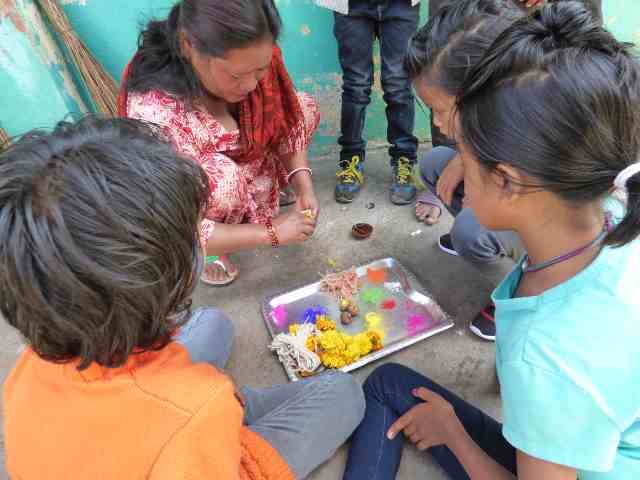
PS. We can not lie to you… we didn’t miss the opportunity to eat some chestnuts to celebrate the “Castanyada” either.
